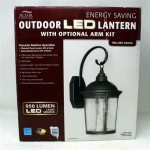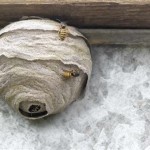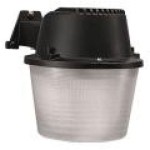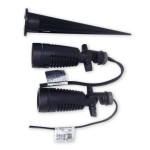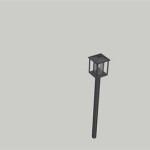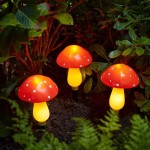How to Plant in Outdoor Planters: A Comprehensive Guide
Outdoor planters offer a versatile and aesthetically pleasing way to cultivate plants in various settings, from patios and balconies to gardens and entryways. Successful planting in outdoor containers necessitates careful consideration of several factors, including planter selection, soil composition, plant choice, and ongoing maintenance. This article provides a detailed guide to ensure thriving plants in outdoor planters.
Selecting the Right Outdoor Planter
The first crucial step involves choosing a planter that is appropriate for the intended plants and the environment. Several factors contribute to the suitability of a planter, including material, size, drainage, and aesthetic appeal.
Material: Outdoor planters are available in a wide range of materials, each with its own advantages and disadvantages. Common materials include:
Terracotta: This porous material allows for good aeration and drainage, preventing root rot. However, terracotta can dry out quickly and is susceptible to cracking in freezing temperatures. It is generally ideal for plants that prefer well-drained soil and warmer climates.
Plastic: Plastic planters are lightweight, durable, and retain moisture well. They are also available in various colors and styles. However, plastic can become brittle over time, particularly when exposed to direct sunlight. The lack of breathability can also lead to waterlogged soil if drainage is not properly managed.
Wood: Wood planters offer a natural and aesthetically pleasing option. They provide good insulation and can be treated to resist rot and insect damage. However, wood requires regular maintenance to prevent decay and may be heavier than other materials.
Metal: Metal planters, such as those made of galvanized steel or aluminum, are durable and weather-resistant. They can add a modern or industrial touch to outdoor spaces. However, metal can heat up quickly in direct sunlight, potentially damaging plant roots.
Concrete: Concrete planters are heavy, durable, and resistant to weathering. They offer good insulation and stability, making them suitable for large plants or windy locations. However, their weight can make them difficult to move, and they can leach lime into the soil, affecting the pH balance.
Size: The size of the planter should be proportional to the size of the plants. Larger plants require larger planters to accommodate their root systems and provide sufficient space for growth. Consider the mature size of the plants when selecting a planter to avoid the need for frequent repotting.
Drainage: Adequate drainage is essential for preventing root rot. Ensure that the planter has drainage holes at the bottom to allow excess water to escape. If the planter does not have drainage holes, it may be necessary to drill them or create a drainage layer at the bottom using gravel or stones.
Aesthetic Appeal: Choose a planter that complements the style of the outdoor space and the overall aesthetic of the garden or patio. Consider the color, shape, and texture of the planter when making a selection.
Preparing the Soil for Outdoor Planters
The soil used in outdoor planters plays a critical role in the health and growth of the plants. Unlike garden soil, which can be dense and poorly drained, potting soil is specifically formulated for container gardening. A high-quality potting mix provides good drainage, aeration, and nutrient retention.
Choosing a Potting Mix: A good potting mix typically contains a blend of ingredients, including peat moss, perlite, vermiculite, and compost. Peat moss helps retain moisture, while perlite and vermiculite improve drainage and aeration. Compost provides essential nutrients and improves soil structure.
Avoid Using Garden Soil: Garden soil is not suitable for use in containers because it is often too heavy and compacted, which can restrict root growth and drainage. Garden soil may also contain weed seeds, pests, and diseases that can harm the plants.
Amending the Soil: Depending on the specific needs of the plants, it may be necessary to amend the potting mix. For example, plants that prefer acidic soil, such as azaleas and rhododendrons, may benefit from the addition of peat moss or sulfur. Plants that require extra nutrients may benefit from the addition of compost or a slow-release fertilizer.
Filling the Planter: When filling the planter, avoid over-compacting the soil. Gently fill the planter to within an inch or two of the rim, leaving space for watering. Lightly tap the sides of the planter to settle the soil.
Planting Techniques and Plant Selection
The selection of appropriate plants is paramount for success. One must consider factors like climate, light exposure, and desired aesthetic. Following correct planting techniques ensures plant health and vigor.
Climate Considerations: Select plants that are well-suited to the local climate. Consider the average temperature, rainfall, and humidity levels in the area. Choose plants that are hardy enough to withstand the temperature extremes and moisture conditions that are typical of the region.
Light Exposure:Assess the amount of sunlight that the planter will receive. Some plants require full sun (at least six hours of direct sunlight per day), while others prefer partial shade or full shade. Choose plants that are adapted to the available light conditions.
Plant Compatibility: Consider the compatibility of different plants when planting them together in the same container. Choose plants that have similar water, nutrient, and light requirements. Avoid planting aggressive plants that may crowd out or outcompete their neighbors.
Planting Procedure:
Carefully remove the plants from their nursery containers. Gently loosen the roots to encourage them to spread out into the new soil. Place the plants in the planter, spacing them according to their mature size. Fill in around the plants with potting mix, gently firming the soil.
Water the plants thoroughly after planting. This will help to settle the soil and hydrate the roots. Add more soil if necessary to fill in any gaps. Apply a layer of mulch around the plants to help retain moisture and suppress weeds.
Plant Combinations:
Creating visually appealing plant combinations can greatly enhance the aesthetic value of outdoor planters. Consider using the "thriller, filler, and spiller" approach.
Thriller: The thriller is a tall, upright plant that serves as the focal point of the planter.
Filler: The filler plants are medium-sized and bushy, filling in the space around the thriller.
Spiller: The spiller plants are trailing or cascading, spilling over the edges of the planter.
Examples: Geraniums, petunias, and verbena are popular choices for adding color and texture. Ornamental grasses and succulents can also add visual interest.
Watering and Fertilizing Plants in Outdoor Planters
Proper watering and fertilization are vital for the ongoing health and vitality of plants in outdoor planters. Container plants rely entirely on the gardener for their water and nutrient needs. Regular observation and adjustment are essential.
Watering Frequency: The frequency of watering depends on various factors, including the type of plant, the size of the planter, the weather conditions, and the type of potting mix. Generally, plants in containers need to be watered more frequently than plants in the ground.
Checking Soil Moisture: Check the soil moisture regularly by inserting a finger into the soil. If the soil feels dry to the touch, it is time to water. Avoid overwatering, as this can lead to root rot. Allow the soil to dry out slightly between waterings.
Watering Techniques: Water plants thoroughly, until water drains out of the bottom of the planter. This ensures that the entire root ball is moistened. Avoid watering the foliage, as this can promote fungal diseases.
Fertilizing: Container plants deplete the nutrients in the potting mix over time. Regular fertilization is necessary to replenish these nutrients and promote healthy growth.
Types of Fertilizer: There are two main types of fertilizer: slow-release and liquid. Slow-release fertilizers release nutrients gradually over a period of several months. Liquid fertilizers provide a quick boost of nutrients but need to be applied more frequently.
Fertilizing Schedule: Follow the instructions on the fertilizer label for the recommended application rate and frequency. Avoid over-fertilizing, as this can damage the plants. In general, plants should be fertilized every two to four weeks during the growing season.
Maintaining Outdoor Planters
Consistent maintenance is key for the long-term health and aesthetic appeal of outdoor planters. This includes tasks such as pruning, deadheading, pest control, and disease management.
Pruning: Regular pruning helps to maintain the shape and size of the plants. Remove any dead, damaged, or diseased branches. Prune flowering plants after they have finished blooming.
Deadheading: Deadheading involves removing spent flowers to encourage the plant to produce more blooms. This also helps to prevent the plant from wasting energy on seed production.
Pest Control: Monitor plants regularly for signs of pests, such as aphids, spider mites, and whiteflies. Treat infestations promptly with appropriate insecticides or insecticidal soap.
Disease Management: Prevention is the most effective strategy for disease management. Ensure good air circulation around the plants and avoid overwatering. Treat fungal diseases with fungicides as needed.
Weed Control: Remove weeds from the planter regularly to prevent them from competing with the plants for water and nutrients. Apply a layer of mulch to help suppress weed growth.
Repotting: Over time, plants may outgrow their containers and require repotting. Repot plants into larger containers as needed, using fresh potting mix.
Winter Protection: In cold climates, it may be necessary to protect outdoor planters from freezing temperatures. Move planters to a sheltered location, such as a garage or shed, or wrap them in burlap or blankets.
By following these guidelines, individuals can successfully plant and maintain thriving plants in outdoor planters, enhancing the beauty and appeal of their outdoor spaces.

How To Plant A Container Garden True Value

24 Stunning Container Garden Planting Ideas A Piece Of Rainbow

Container Gardening Guide

3 Potted Plant Arrangement Ideas For A Gorgeous Patio Garden

Everything You Need To Know About Container Gardening

What Are The 5 Best Pot Fillers To Use In Large Planters

How To Plan And Plant Lush Outdoor Planters

Best Pots For Outdoor Plants How To Choose Color Size And Shape Creative Design Manufacturing

Exciting Container Gardening Tips Large Fiberglass Planters

How To Plant A Container Garden True Value
